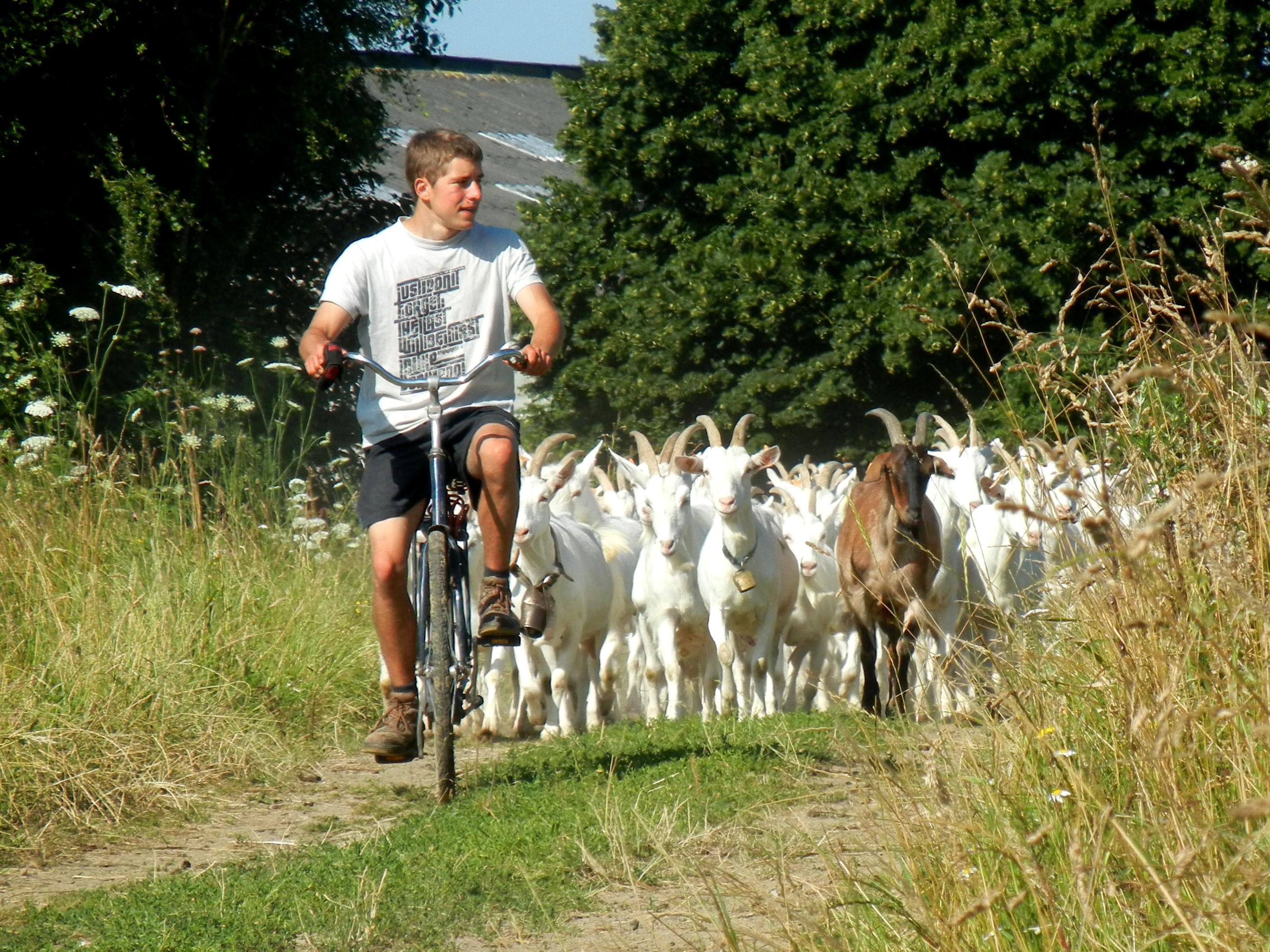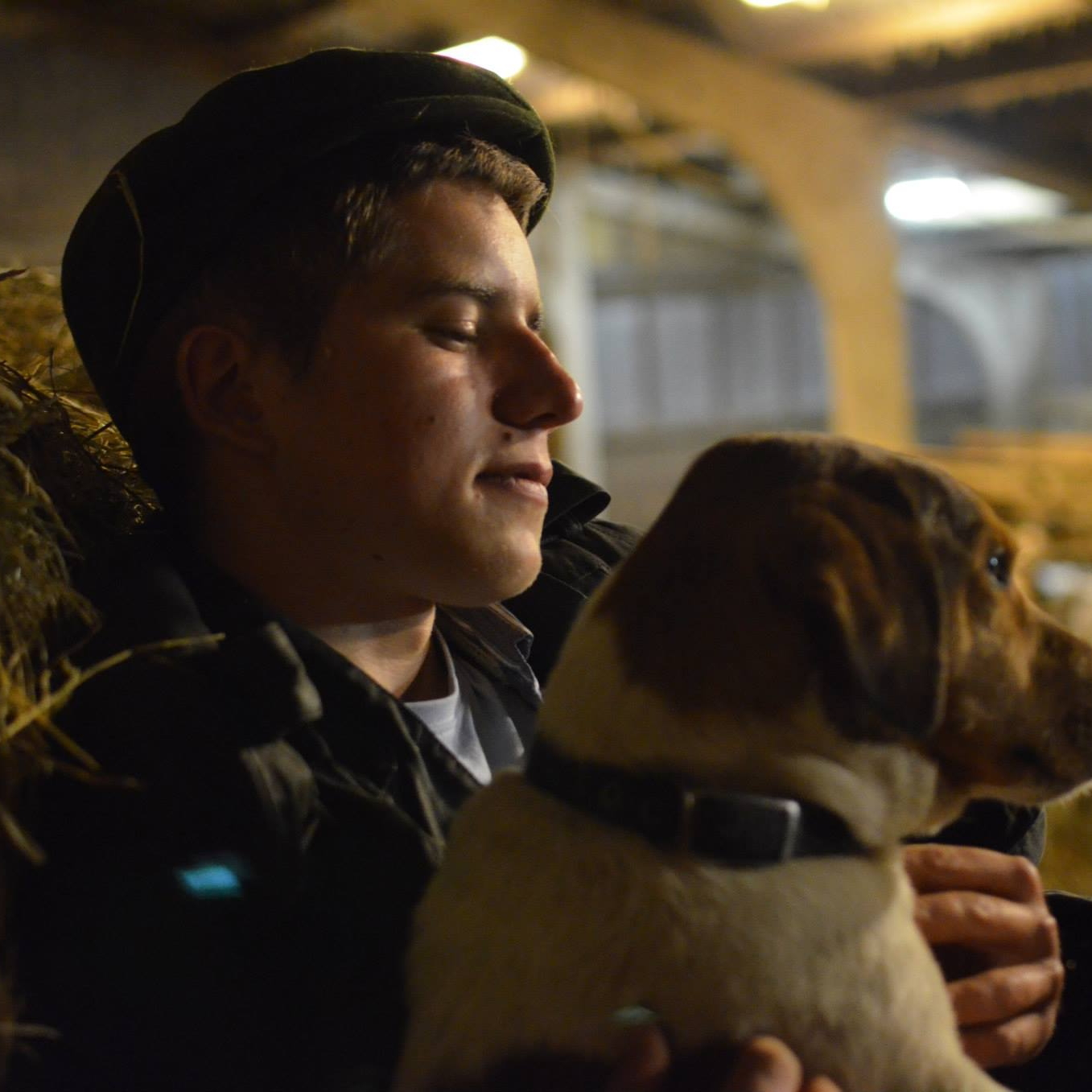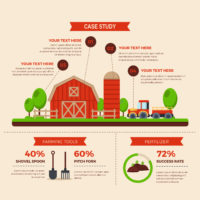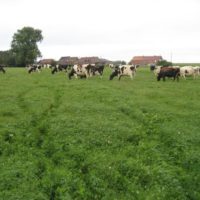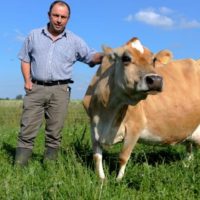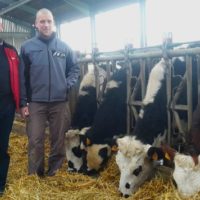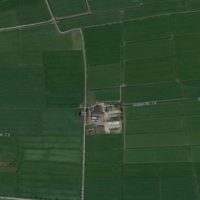Description
Grazing management system
The rotational grazing system for dairy goats is organized in modules of 3 days delimited by fixed external fences. The first day, goats have access to an area corresponding to one and a half grazing day. This area is demarcated by an electric wire. The electric wire is moved the second and third days, the new daily area corresponds each of these days to 0.75 grazing day. There is no electric back wire. This allows more space the first day but the grass in excess is consumed the second and third days while respecting a maximum of three days per period of stay. The fourth day, the system starts again. The rest period is at least 40 days for controlling goat internal parasites.
Complex forage mixture for temporary grasslands
14 species of grasses, legumes, chicory, plantain, and forage winter oilseed rape as a starter (1,5 kg/ha). Forage oilseed rape does not induce a bad taste to the milk. Diversity is appreciated by goats.
Forage conservation technique
When hay is not dry enough, it is harvested by a pick-up loader wagon and it is dried out in barn on wooden pallets between straw bales with a blowing system (3-5 HP).
The objectives of this organic grazing system are producing high quality grass for dairy goats, decreasing internal parasite pressure, and reducing daily work associated with the move of electric wires (the 4-wire Gallagher system is easy to handle). Seasonal dairy production is harmonized with grass growth. In rainy days of the grazing period, goats have to be fed in barn with hay. Hay should be high quality at that period (hay for winter can be lower quality because there is no milk production at that period). There is thus a necessity to be very flexible in the grazing period. In the complex forage mixture, chicory is used as a dock control mean on wet heavy soils. It provides also minerals, proteins, and tannins.
Farm description
Environment
- Soil type: Clay
- Climate : Temperate oceanic
- Altitude: 55 m asl
- Slope: 5 %
Grassland management
- Grazing : Yes
- Grazing management type: rotational and strip stocking (one day per plot)
- Barn hay drying
- Hay produced on temporary grasslands in a 4-cut per year cutting regime
Structure
- Annual Work Unit: 2
- Agricultural Area : 23.4 ha UAA
- Permanent grassland area: 9 ha
- Temporary grassland area: 9.2 ha
- Annual crop area: 5.2 ha
- Breed: Saanen
- Stocking rate: 1.1 LU per ha of grassland area
Animal performance
- Dairy goat production: 450 l/goat*year
Why it is working
The system is working because it is small-scale and very flexible. All dairy products are sold as raw milk or raw milk cheese. Consumers highly appreciate milk and cheese quality. There is no intermediates; the added value is kept in the farm. The farm is also educational for children, it welcomes 1,500 children per year. Children bring goats to grassland plots and make other activities including cheese making. At the end of the visit, each child receives a cheese and brings it back home which contributes to product promotion.
